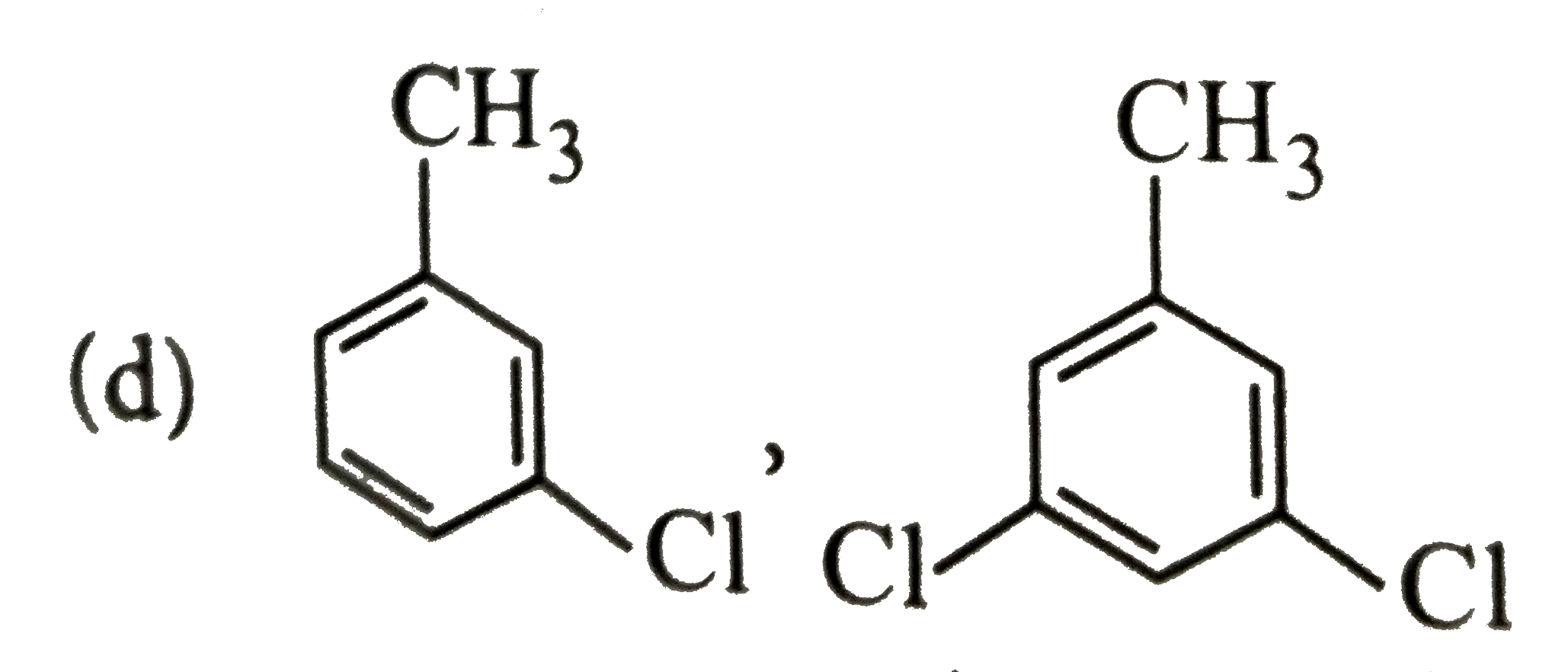An orgnic compoud with the formula hydrolysis forms a acid which reduces Fehling solution . The compound can be :
Ethanenitrile
Isocyanoethane
Ethoxyethane
Propanenitrile
The correct Answer is:B
To solve the problem, we need to analyze the given organic compound with the formula C₃H₅N and determine which compound it could be based on the information provided.
1. Identify the Structure of C₃H₅N:
- The molecular formula C₃H₅N indicates that the compound is likely unsaturated since it has fewer hydrogens than a saturated compound (which would have C₃H₈N).
- This suggests the presence of either a double bond or a triple bond.
2. Consider Possible Functional Groups:
- The compound could be a nitrile (R-C≡N) or an isocyanate (R-N=C=O).
- Let's explore both possibilities.
3. Case 1: Nitrile (C₂H₅CN):
- If we consider the structure as a nitrile (specifically ethyl cyanide, C₂H₅CN), hydrolysis of this compound would yield acetic acid (CH₃COOH) and ammonia (NH₃).
- Acetic acid does not reduce Fehling's solution, as it is not an aldehyde.
4. Case 2: Isocyanate (C₂H₅NCO):
- If we consider the structure as an isocyanate (specifically ethyl isocyanate, C₂H₅NCO), hydrolysis of this compound would yield an amine (ethylamine, CH₃CH₂NH₂) and formic acid (HCOOH).
- Formic acid is known to reduce Fehling's solution because it is an aldehyde in its tautomeric form.
5. Conclusion:
- Since the hydrolysis of the isocyanate leads to the formation of formic acid, which can reduce Fehling's solution, the correct answer is that the compound is isocyanoethane (C₂H₅NCO).
Final Answer:
The compound can be isocyanoethane (C₂H₅NCO).
- The molecular formula C₃H₅N indicates that the compound is likely unsaturated since it has fewer hydrogens than a saturated compound (which would have C₃H₈N).
- This suggests the presence of either a double bond or a triple bond.
- The compound could be a nitrile (R-C≡N) or an isocyanate (R-N=C=O).
- Let's explore both possibilities.
- If we consider the structure as a nitrile (specifically ethyl cyanide, C₂H₅CN), hydrolysis of this compound would yield acetic acid (CH₃COOH) and ammonia (NH₃).
- Acetic acid does not reduce Fehling's solution, as it is not an aldehyde.
- If we consider the structure as an isocyanate (specifically ethyl isocyanate, C₂H₅NCO), hydrolysis of this compound would yield an amine (ethylamine, CH₃CH₂NH₂) and formic acid (HCOOH).
- Formic acid is known to reduce Fehling's solution because it is an aldehyde in its tautomeric form.
- Since the hydrolysis of the isocyanate leads to the formation of formic acid, which can reduce Fehling's solution, the correct answer is that the compound is isocyanoethane (C₂H₅NCO).
The compound can be isocyanoethane (C₂H₅NCO).
Topper's Solved these Questions
- ORGANIC COMPOUNDS WITH FUNCTIONAL GROUPBOOK - CENGAGE CHEMISTRY ENGLISHCHAPTER - ORGANIC COMPOUNDS WITH FUNCTIONAL GROUPEXERCISE - Exercises Assertion And Reasoning
9 Videos
- ORGANIC COMPOUNDS WITH FUNCTIONAL GROUPBOOK - CENGAGE CHEMISTRY ENGLISHCHAPTER - ORGANIC COMPOUNDS WITH FUNCTIONAL GROUPEXERCISE - Archives Single Correct
10 Videos
- ORGANIC COMPOUNDS WITH FUNCTIONAL GROUPBOOK - CENGAGE CHEMISTRY ENGLISHCHAPTER - ORGANIC COMPOUNDS WITH FUNCTIONAL GROUPEXERCISE - Exercises Multiple Correct
18 Videos
- NUCLEAR CHEMISTRYBOOK - CENGAGE CHEMISTRY ENGLISHCHAPTER - NUCLEAR CHEMISTRYEXERCISE - Archives Subjective
13 Videos
- P-BLOCK GROUP 15 ELEMENTS - THE NITROGEN FAMILYBOOK - CENGAGE CHEMISTRY ENGLISHCHAPTER - P-BLOCK GROUP 15 ELEMENTS - THE NITROGEN FAMILYEXERCISE - Exercises Archives (Subjective)
28 Videos
Similar Questions
The acid which reduces Fehling solution is
View SolutionAn organic compound (A) having molecular formula C2HCl3O reduces Fehling's solution and on oxidation gives a monocarboxylic acid (B) with molecular formula C2HCl3O2. Upon distillation with sodalime, (B) gives a sweet smelling liquid (C) containing 89.12% chlorine. (C) can also be obtained by heating (A) with alkali. Identity (A), (B) and (C) and explain the reactions involved.
View Solution
Knowledge Check
An ester A of the formula C5H8O2 on acidic, hydrolysis gives an acid B, which reduces Tollen's reagent and an alcohol C, which gives iodoform test. Ester A can also be converted into alcohol B by reaction with excess of Grignard reagent D.
A B
B C
C DD is C2H5MgBr
DD is C2H5MgBrA compound with empirical formula C2H5O has a vapour density of 45. The molecular formula of the compound will be
AC2H5OBC2H2O4CC5H14O4DC4H10O2A compound X with molecular formula C7H8 is treated with Cl2 in presence of FeCl3. Which of the following compounds are formed during the reaction?
A B
B C
C D
D
An organic compound [A] with molecular formula C4H8O when reduced with NaBH4 gives compound [B] which reacts with HBr to form compound [C] (optically active) Identify A,B , C and wirte the two enantimoers of compound [C].
View SolutionAn alkyne with five carbon atoms per molecule when passed through dilute sulphuric acid containing mercuric sulphate gives a compound which forms an oxime but has no effect on Fehling's solution. The compound on oxidation gives dimethyl acetic acid. It reacts with sodamide to form a hydrocarbon. What is the structure of the alkyne ?
View SolutionA carbonyl compound gives a positive lodoform test but but does
not reduce Tollen's reagent or Fehling's solution. It forms a cyanohydrin with HCN, which on hydrolysis gives a hydroxy acid
with a methyl side chain. The compound :-
View SolutionA carbonyl compound with molecular mass 86, does not reduce Fehling's solution but forms crystalline bisulphite derivative and gives iodoform test. The possible compound is
View SolutionAn organic compound (A) , C4H8Cl2 on hydrolysis forms another compound (B) , C4H8O.
If (B) does not responds to iodo form test , then identify possible structures of (A) and (B).
View Solution
